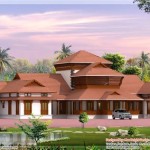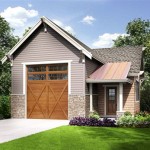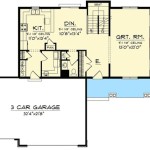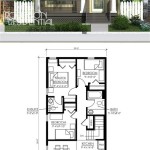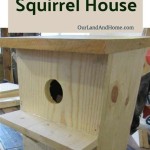Barred Owl House Plans are detailed instructions used to build a shelter for Barred Owls, a medium-sized owl species found in North and Central America. These plans provide step-by-step guidance on the materials, tools, and techniques required for constructing a safe and suitable owl house.
Properly designed and placed Barred Owl Houses can provide nesting sites for these owls, enhancing their reproductive success and helping to conserve their population. The structures are typically made from wood, ensuring insulation and durability, and are carefully designed to meet the specific needs and preferences of Barred Owls. By following comprehensive Barred Owl House Plans, individuals and organizations can contribute to the well-being of these magnificent birds.
This article will delve into the specifics of Barred Owl House Plans, discussing the types of plans available, the key elements to consider when building an owl house, and the benefits of providing nesting sites for Barred Owls.
Essential considerations for Barred Owl House Plans include:
- Size and dimensions
- Entrance hole placement
- Ventilation and drainage
- Predator protection features
- Rot-resistant materials
- Mounting height and location
- Ease of cleaning and maintenance
- Durability and longevity
By addressing these key elements, Barred Owl House Plans can provide suitable nesting sites for these owls, supporting their breeding success and contributing to their conservation.
Size and dimensions
The size and dimensions of a Barred Owl House Plan are crucial for providing a suitable nesting space for these owls. The internal dimensions should be large enough to accommodate a pair of adult owls and their young, while also allowing for proper air circulation. The entrance hole should be positioned and sized appropriately to allow easy access for the owls while deterring predators.
- Height: The height of the owl house should be between 24 and 36 inches (61 to 91 cm). This provides sufficient vertical space for the owls to move around and for their young to grow.
- Width: The width of the owl house should be between 12 and 18 inches (30 to 46 cm). This provides enough space for the owls to move around comfortably and to incubate their eggs.
- Depth: The depth of the owl house should be between 12 and 18 inches (30 to 46 cm). This provides enough space for the owls to turn around and to protect their young from the elements.
- Entrance hole diameter: The entrance hole should be approximately 3 inches (7.6 cm) in diameter. This allows the owls to enter and exit the nest easily while preventing larger predators from entering.
By considering these size and dimension guidelines, Barred Owl House Plans can provide nesting sites that meet the specific requirements of these owls, supporting their successful breeding and contributing to their conservation.
Entrance hole placement
The placement of the entrance hole in Barred Owl House Plans is critical for the safety and well-being of the owls. It should be positioned to allow easy access for the owls while deterring predators and preventing weather damage.
- Height from the bottom: The entrance hole should be placed approximately 12 to 18 inches (30 to 46 cm) from the bottom of the owl house. This height allows the owls to enter and exit the nest easily while making it more difficult for predators to reach the eggs or young.
- Direction: The entrance hole should face away from prevailing winds and direct sunlight. This positioning helps to protect the owls and their young from harsh weather conditions and reduces the risk of overheating.
- Predator protection: The entrance hole should be designed to prevent predators from entering the owl house. This can be achieved by using a baffle or a predator guard, which are devices that make it difficult for predators to reach the entrance hole.
- Weather protection: The entrance hole should be protected from rain and snow. This can be achieved by using a overhang or a drip edge, which are features that divert water away from the entrance hole./>
By carefully considering entrance hole placement in Barred Owl House Plans, individuals and organizations can provide safe and suitable nesting sites for these owls, supporting their breeding success and contributing to their conservation.
Ventilation and drainage
Proper ventilation and drainage are essential considerations in Barred Owl House Plans to ensure the health and well-being of the owls. Adequate ventilation prevents excessive moisture and heat buildup within the owl house, reducing the risk of respiratory problems and overheating. Effective drainage allows water to drain away from the owl house, preventing rot and mold growth.
Ventilation:
- Vents: Install screened vents near the top and bottom of the owl house to allow for air circulation. These vents should be designed to prevent predators from entering the owl house.
- Gaps: Leave small gaps between the siding and the roof of the owl house to allow for additional ventilation.
- Avoid overcrowding: Ensure that the owl house is not overcrowded with nesting material, as this can restrict airflow.
Drainage:
- Sloped roof: Design the roof of the owl house with a slope to allow water to drain away from the entrance hole.
- Drip edge: Install a drip edge around the perimeter of the roof to prevent water from dripping down the sides of the owl house.
- Drainage holes: Drill small drainage holes in the bottom of the owl house to allow excess water to drain out.
- Avoid ground contact: Place the owl house on a platform or poles to prevent it from coming into contact with the ground, which can lead to moisture problems.
By incorporating proper ventilation and drainage features into Barred Owl House Plans, individuals and organizations can provide healthy and comfortable nesting sites for these owls, supporting their breeding success and contributing to their conservation.
Predator protection features
Barred Owl House Plans should incorporate predator protection features to safeguard the owls and their young from potential threats. These features deter predators from accessing the nesting site and help to ensure the safety and well-being of the owls.
Entrance hole design:
- Size: The entrance hole should be sized to allow the owls to enter and exit the nest easily while preventing larger predators from entering. A diameter of approximately 3 inches (7.6 cm) is recommended.
- Shape: The entrance hole should be oval or rectangular rather than round. This makes it more difficult for predators to enlarge the hole and gain access to the nest.
- Location: The entrance hole should be placed high up on the owl house, at least 12 to 18 inches (30 to 46 cm) from the bottom. This makes it more difficult for ground predators to reach the nest.
Baffles and predator guards:
- Baffles: Baffles are devices that are placed around the entrance hole to prevent predators from reaching the nest. They can be made of metal, plastic, or wood, and are designed to make it difficult for predators to climb or jump to the entrance hole.
- Predator guards: Predator guards are similar to baffles, but they are typically larger and more elaborate. They are designed to completely cover the entrance hole and prevent predators from accessing the nest.
Other predator protection measures:
- Placement of the owl house: The owl house should be placed in a location that is not easily accessible to predators. Avoid placing the owl house near trees or other structures that predators can use to climb to the nest.
- Regular monitoring: Regularly inspect the owl house for signs of predators or damage. If any damage is found, it should be repaired immediately to prevent predators from gaining access to the nest.
By incorporating these predator protection features into Barred Owl House Plans, individuals and organizations can provide safe and secure nesting sites for these owls, supporting their breeding success and contributing to their conservation.
Rot-resistant materials
Barred Owl House Plans should specify the use of rot-resistant materials to ensure the longevity and durability of the owl house. Rot-resistant materials are less susceptible to decay and deterioration caused by moisture, fungi, and insects, which can compromise the structural integrity of the owl house and impact the health and safety of the owls.
- Cedar: Cedar is a naturally rot-resistant wood that is commonly used in the construction of owl houses. It is resistant to decay, insects, and moisture, making it a durable and long-lasting material.
- Redwood: Redwood is another naturally rot-resistant wood that is suitable for owl house construction. It is known for its durability and resistance to rot, decay, and insects.
- Cypress: Cypress is a rot-resistant wood that is also resistant to termites and other insects. It is a good choice for owl houses that will be exposed to harsh weather conditions.
- Plastic: Plastic owl houses are rot-resistant and can be a good option for areas with high humidity or moisture. They are also easy to clean and maintain.
By specifying the use of rot-resistant materials in Barred Owl House Plans, individuals and organizations can ensure that the owl houses they build will withstand the elements and provide safe and durable nesting sites for these owls for many years to come.
Mounting height and location
The mounting height and location of Barred Owl House Plans are critical factors that influence the safety, accessibility, and effectiveness of the owl house. Careful consideration should be given to these aspects to ensure that the owl house meets the specific needs of Barred Owls and contributes to their successful breeding.
- Height: Barred Owl Houses should be mounted at a height of 10 to 20 feet (3 to 6 meters) above the ground. This height provides a good balance between accessibility for the owls and protection from ground predators. It also allows the owls to have a clear view of their surroundings and to detect potential threats.
- Location: Barred Owl Houses should be placed in areas that provide suitable nesting habitat for these owls. Ideal locations include forests, woodlands, and parks that have a mix of mature trees and open spaces. The owl house should be placed in a tree that is healthy and strong, and that provides good support for the owl house.
- Distance from other owl houses: Barred Owls are territorial birds, and they typically do not tolerate other owl houses in close proximity to their own. When placing multiple owl houses in an area, it is important to maintain a distance of at least 1,000 feet (300 meters) between them to avoid conflicts between owls.
- Visibility and accessibility: The owl house should be placed in a location that is visible to the owls but not easily accessible to predators. It should be positioned so that the owls have a clear flight path to and from the entrance hole.
By carefully considering the mounting height and location of Barred Owl House Plans, individuals and organizations can provide suitable nesting sites for these owls, supporting their breeding success and contributing to their conservation.
Ease of cleaning and maintenance
Barred Owl House Plans should consider the ease of cleaning and maintenance to ensure the health and well-being of the owls and the longevity of the owl house. Regular cleaning and maintenance are essential to remove debris, parasites, and other potential hazards that can accumulate over time.
Removable floor: A removable floor makes it easy to clean the owl house and remove any accumulated debris or nesting material. The floor should be designed to be easily removed and replaced without disturbing the owls or damaging the owl house.
Clean-out hole: A clean-out hole provides access for cleaning the owl house without having to remove the entire floor. The clean-out hole should be large enough to allow for easy cleaning but small enough to prevent predators from entering the owl house.
Smooth interior surfaces: Smooth interior surfaces make it easier to clean the owl house and prevent debris from accumulating. Avoid using rough or textured materials that can trap dirt and parasites.
Regular inspections: Regular inspections of the owl house are important to identify any signs of damage, debris accumulation, or other issues. Inspections should be conducted at least once a year, or more often if the owl house is heavily used or exposed to harsh weather conditions.
Durability and longevity
Barred Owl House Plans should prioritize durability and longevity to ensure that the owl house can withstand the elements and provide a safe and stable nesting site for Barred Owls over multiple breeding seasons. Durable and long-lasting owl houses require careful consideration of materials, construction methods, and maintenance practices.
Durable materials: The choice of materials used in the construction of the owl house has a significant impact on its durability. Rot-resistant woods, such as cedar, redwood, or cypress, are ideal for owl houses as they can withstand moisture, decay, and insect damage. Plastic owl houses can also be durable, especially in areas with high humidity or moisture. It is important to avoid using materials that are susceptible to rot, decay, or insect infestation, as these can compromise the structural integrity of the owl house and shorten its lifespan.
Sturdy construction: The construction methods used to build the owl house should ensure its sturdiness and ability to withstand strong winds, heavy snow, and other weather conditions. The owl house should be securely attached to the mounting platform or tree, and all joints and seams should be properly sealed to prevent leaks and drafts. Using galvanized or stainless steel hardware for all fasteners is recommended to prevent rust and corrosion.
Regular maintenance: Regular maintenance is essential to extend the lifespan of the owl house and ensure its continued suitability for nesting Barred Owls. This includes periodic inspections to check for any signs of damage, such as cracks, holes, or loose joints. Any damage should be repaired promptly to prevent further deterioration. Regular cleaning of the owl house is also important to remove debris, parasites, and other potential hazards that can accumulate over time.










Related Posts

